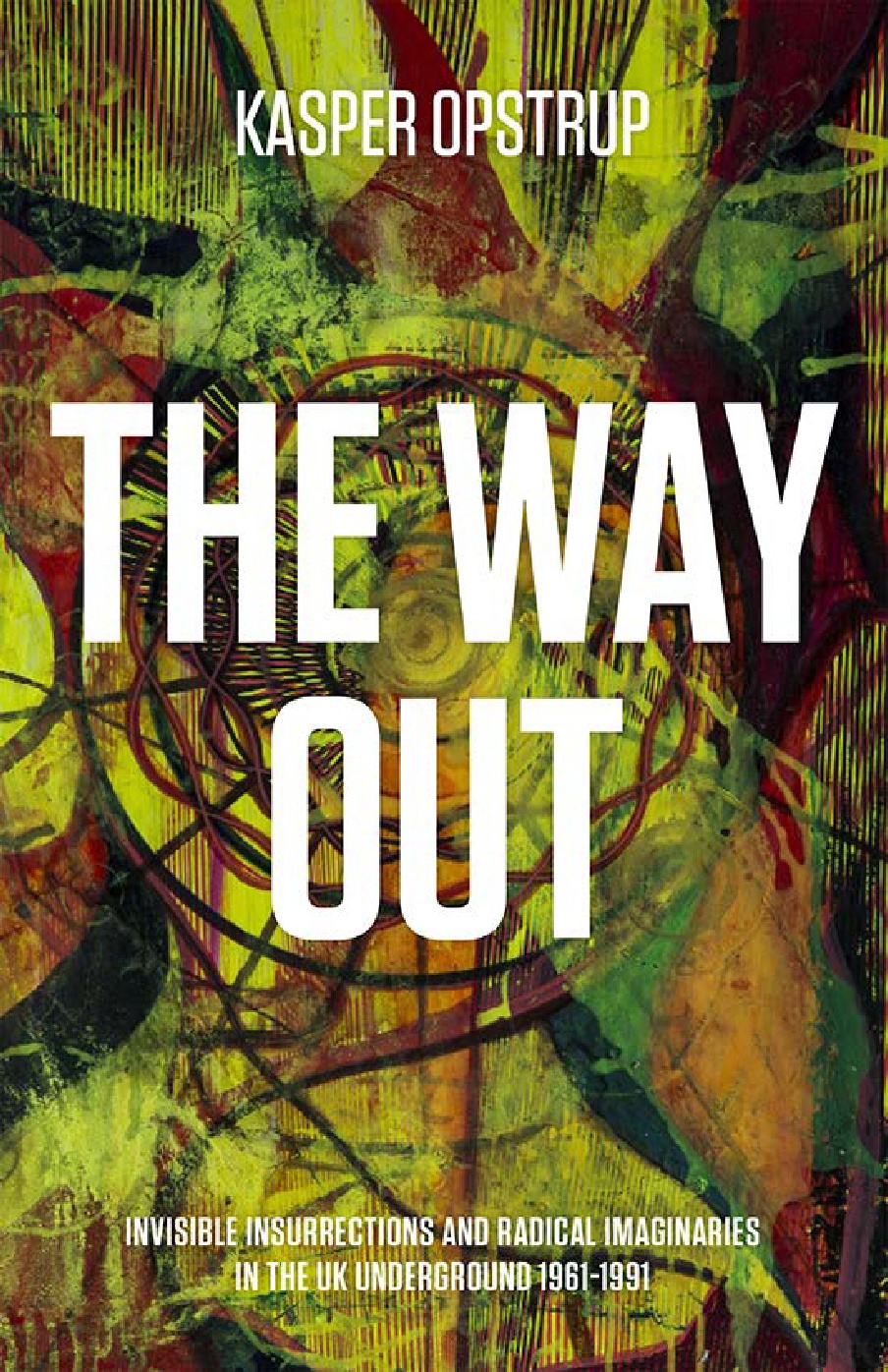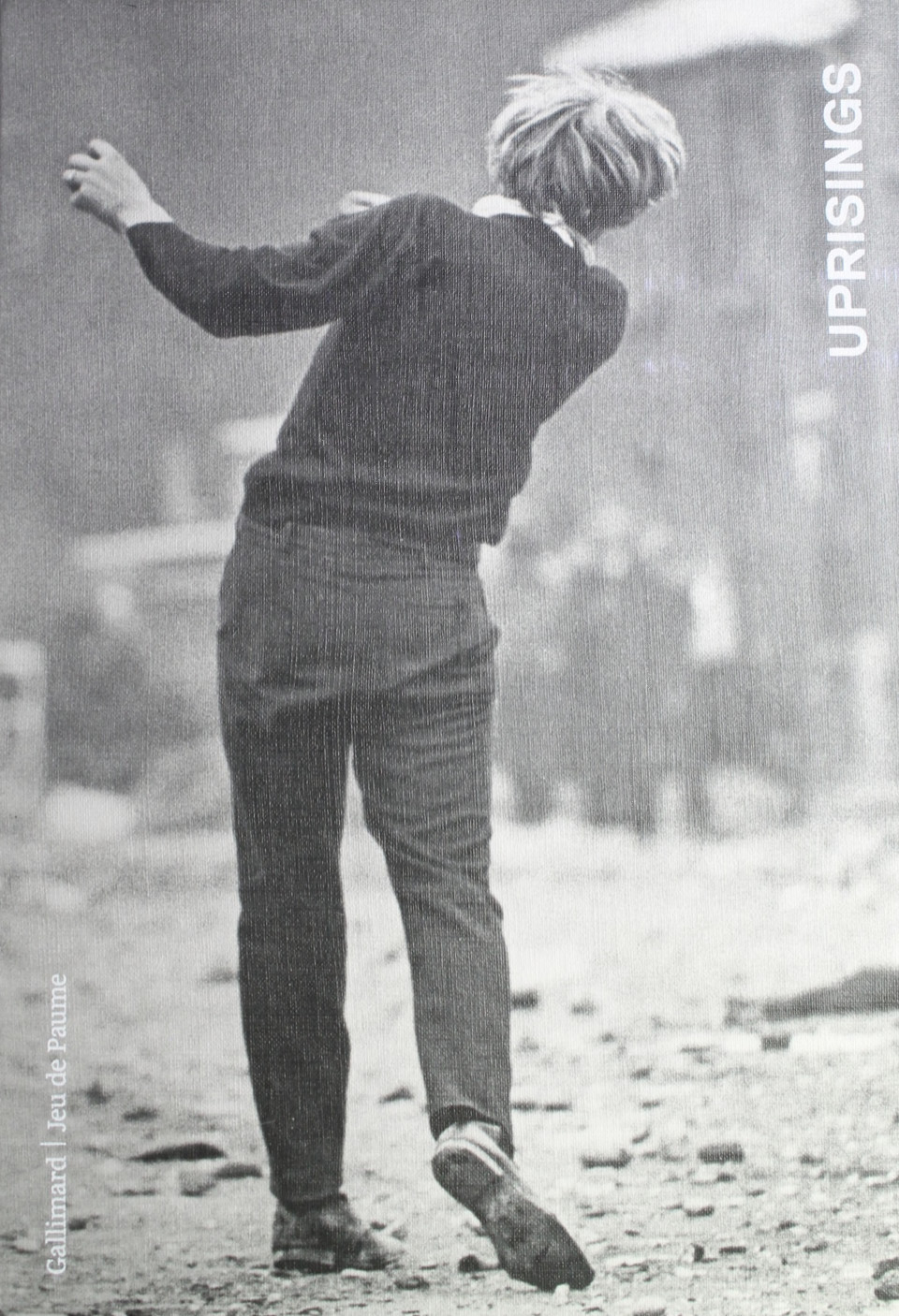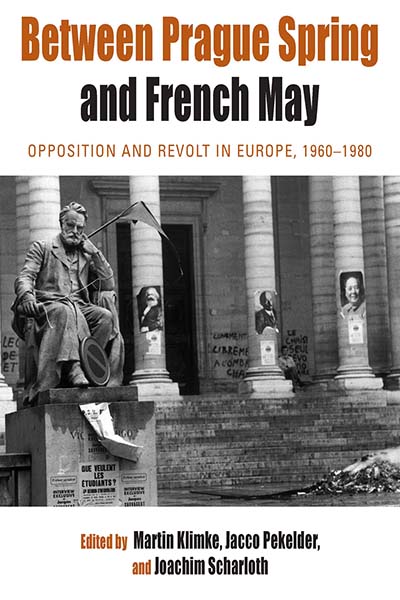Kasper Opstrup: The Way Out: Invisible Insurrections and Radical Imaginaries in the UK Underground, 1961-1991 (2017)
Filed under book | Tags: · 1960s, 1970s, 1980s, aesthetics, avant-garde, counterculture, cultural history, education, london, mysticism, politics, protest, social movements, united kingdom

“A counterculture history of art and experimental politics that turns the world inside out
The Way Out examines the radical political and hedonist imaginaries of the experimental fringes of the UK Underground from 1961 to 1991. By examining the relations between collective and collaborative practices with an explicit agenda of cultural revolution, Kasper Opstrup charts a hidden history of experiments with cultural engineering, expanding current discussions of art, medias, politics, radical education and the occult revival. Even though the theatres of operation have changed with the rise of the Internet and a globalised finance economy, these imaginaries still raise questions that speak directly to the present.
Here we encounter a series of figures – including Alexander Trocchi, R. D. Laing, Joseph Berke, Brion Gysin, William Burroughs and Genesis P-Orridge – that blurred the lines between inner and outer, the invisible and the material. Four singular forms of speculative techniques for igniting an invisible insurrection with cultural means make up the central case studies: the sigma project, London Anti-University, Academy 23 and thee Temple ov Psychick Youth.
Contained within these imaginaries is a new type of action university: a communal affair that would improvise a new type of social relation into existence by de-programming and de-conditioning us without any blueprints for the future besides to make it happen. Instead of being turned upside down, the world was to be changed from the inside out.”
Publisher Minor Compositions, Wivenhoe, 2017
ISBN 9781570273285
252 pages
Georges Didi-Huberman (ed.): Uprisings (2016)
Filed under book | Tags: · art, art history, protest, revolution, social movements

“While the notion of revolution, rebellion, and revolt isn’t alien in contemporary society’s vocabulary, the object of its action is replete with collective amnesia and inertia. That is why analyzing the representations of “uprisings”—from the etchings Goya, to contemporary installations, paintings, photographs, documents, videos, and films—demonstrates an unequivocal relevance to the social context in which we are living in 2016.
Constructing a chronological narrative or an exhaustive review of “uprisings” is not the aim. Thousands of representations of the gesture to say “NO,” to shout “STOP,” or to raise the banner “THEY SHALL NOT PASS” exist. They are known by women, men, and children, by workers, artists, and poets, by those who cry out and those who are silent, by those who weep, who mourn and those who make them. Uprisings is a montage of these words, gestures, and actions, which defy submission to absolute power.” (from the Foreword)
Published on the occasion of the exhibition Uprisings (Soulèvements) presented at the Jeu de Paume, Paris, from 18 October 2016 to 15 January 2017.
Foreword by Marta Gili
Introduction by Georges Didi-Huberman
Texts by Nicole Brenez, Judith Butler, Marie-José Mondzain, Antonio Negri, Jacques Rancière
Publisher Jeu de Paume, Paris, and Gallimard, Paris, 2016
ISBN 2072697298, 9782072697296
420 pages
Exhibition reviews: Joseph Nechvatal (Hyperallergic), Vivian Sky Rehberg (Frieze), Emily Nathan (Artnet).
PDF (removed on 2017-6-9 upon request from distributor)
Comments (3)Between Prague Spring and French May: Opposition and Revolt in Europe, 1960-1980 (2011)
Filed under book | Tags: · 1960s, 1968, 1970s, history, media, non-aligned movement, politics, protest, resistance

“Abandoning the usual Cold War–oriented narrative of postwar European protest and opposition movements, this volume offers an innovative, interdisciplinary, and comprehensive perspective on two decades of protest and social upheaval in postwar Europe. It examines the mutual influences and interactions among dissenters in Western Europe, the Warsaw Pact countries, and the non-aligned European countries, and shows how ideological and political developments in the East and West were interconnected through official state or party channels as well as a variety of private and clandestine contacts. Focusing on issues arising from the cross-cultural transfer of ideas, the adjustments to institutional and political frameworks, and the role of the media in staging protest, the volume examines the romanticized attitude of Western activists to violent liberation movements in the Third World and the idolization of imprisoned RAF members as martyrs among left-wing circles across Western Europe.”
Edited by Martin Klimke, Jacco Pekelder and Joachim Scharloth
Publisher Berghahn Books, New York, 2011
Protest, Culture, and Society series, 7
ISBN 9780857451064, 0857451065
vi+347 pages
via publisher
Reviews: Caroline Hoefferle (J Study of Radicalism, 2012), Benoît Challand (Memory Studies, 2013), Rosemary H.T. O’Kane (Political Studies Rev, 2013), Sarah Žabić (Peace&Change, 2013), Matthias Dapprich (J Cold War Studies, 2014), Francis D. Raška (European Legacy, 2016).
Comment (0)
